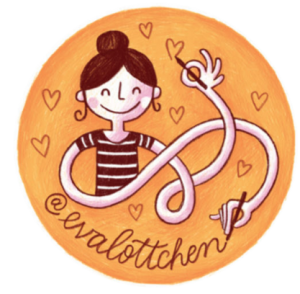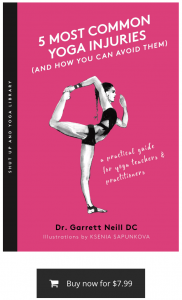@yoga.notes
We were delighted to interview Eva-Lotta Lamm, the designer and yogi behind @yoga.notes. She tells us about how powerful and useful it is to think visually, about her love for traveling, and for languages. Our favourite part? What she thinks the world needs more of.
What did you want to be when you were a child?
I think the very first profession I wanted to have as a small child was being a train driver. I’m not quite sure why, but to this day, I love travelling (especially by train), and I love the atmosphere at train stations. There’s something romantic to them, with all the possible places to go and so many strangers crossing paths for a short moment.
What are some of the choices you’ve made that made you who you are?
Most of the choices in my life have been made following my intuition. I like to try things out in a small way to see if the direction I’m taking is the right one. I have a hard time making big hypothetical plans and then just executing them. I need to try things out and experience them first, to see if they feel right.
In my early twenties, I made a pact with myself to never not do something I would like to do just because I was afraid of it. It’s difficult, but it has made my life interesting. Some of the big decisions that resulted from that were moving to Paris after graduating, then moving to London 4 years later because I fell in love with an Englishman. There was also quitting a great job at Google to go travelling around the world and study yoga, starting my own business to follow my interest in visual thinking, and self-publishing my own books.
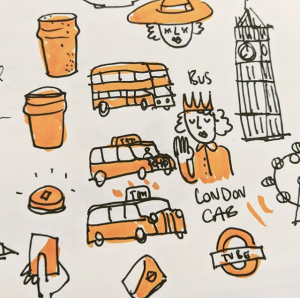
What would constitute a “perfect” day for you?
It would start with getting up early. I love being up when most of the world is still asleep. The light is beautiful just before sunrise. Everything is calm and full of potential. It’s a great time for yoga or a run.
Ideally, my perfect day would take place somewhere beautiful, preferably in nature. A beach maybe. Or the mountains. I’d spend it with my favourite person. We’d go out exploring our surroundings, walk a lot, laugh and take a break every now and then to enjoy tasty food and a good view.
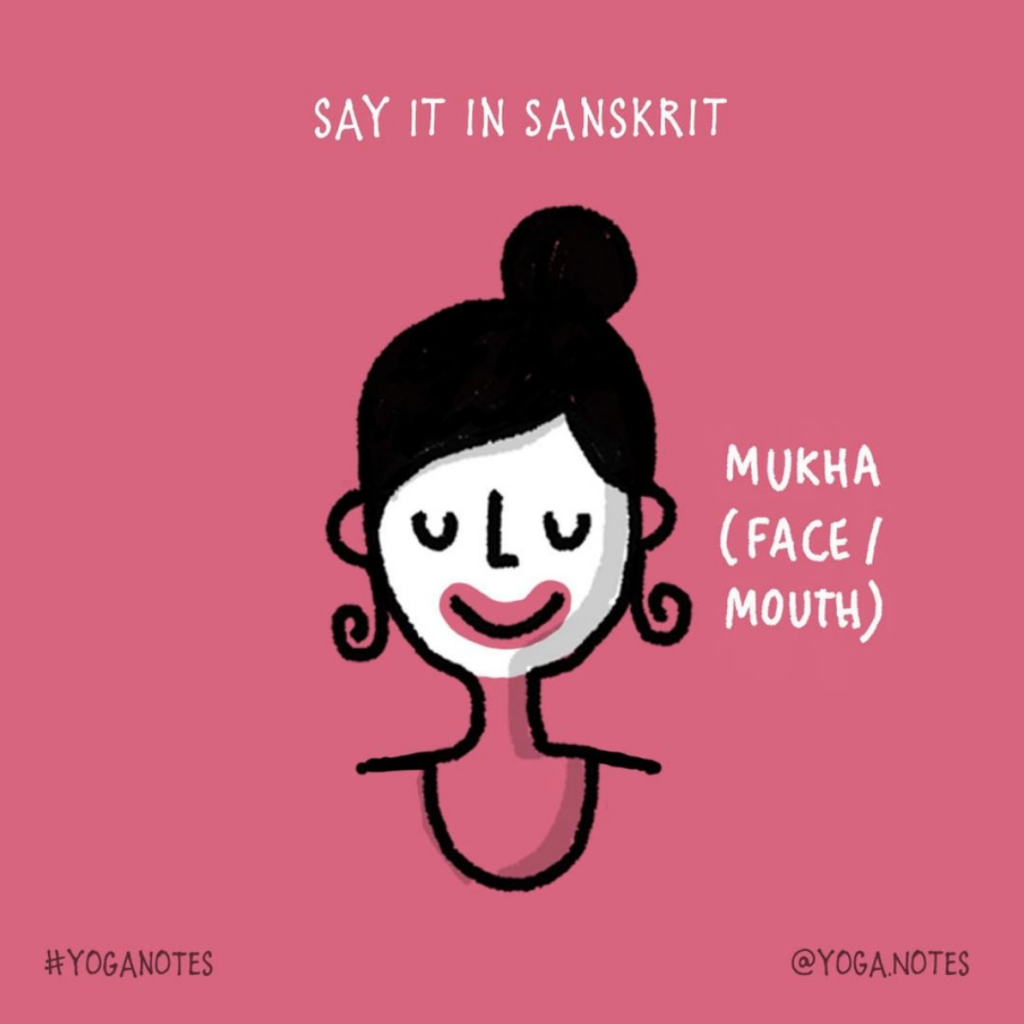
What role does social media play in your life?
It’s a bit of a double-edged sword. Social media is an important element to earning a living as a lot of people discover my work online. Being active on social media allows me to reach these people directly. On the other hand, it’s easy to get sucked into comparing myself with others and subconsciously making part of my self-worth dependent on the number of likes and positive comments. It’s a thin edge to walk on to keep the balance between the positive and negative effects.
For 2019, I decided to keep it both structured and playful: On my Yoga Notes Instagram account, I am posting daily sketches of postures, sequences and little videos that show how to draw them. I want the content to be useful and interesting, and if someone feels like they want to learn more, they can go and buy my book. On my general profile, I keep things a bit more loose and playful, showing snippets from my sketching practice, current projects or things I just draw for fun.
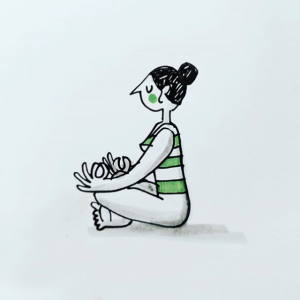
If you could wake up tomorrow having gained any one quality or ability, what would it be?
I would love to be able to speak any language. I love languages. They are a fascinating mirror into how we think and make sense of the world.
What is the greatest accomplishment of your life?
Wow. This is a hard question. I think my life is more of an accumulation of smaller accomplishments that over time have built up to something that I am happy to call ‘me’ 🙂
I have made and self-published a series of books with my sketchnotes from design conferences, my visual notes from my yoga teacher training and my hand-drawn travel diary from our world trip. And last year I published the YogaNotes book, which is a step-by-step guide to learn how to sketch simple Yoga stick figures to draw your yoga sequences in a clear and nice visual way. This is one of my favourite ‘accomplishments’ so far. It had great resonance and has enabled many other Yogi(ni)s and Yoga teachers to draw flows for their practice and classes, and to combine their visual creativity with their yoga practice.
Tell us more about your book, Yoganotes. How did you come up with the idea? Did something, in particular, serve as inspiration for it?
In 2016 I did a 200h Hatha Yoga Teacher training in India. This month-long course was pretty intense, and there was an immense amount of information to take in and digest. I have been taking notes in a visual way for many years (mainly at talks and meetings in my profession as a designer), so it was a natural step to also use sketching to capture the content of the teacher training. It is so much quicker and easier to understand a posture and its alignment or a sequence of Asanas when you make little drawings rather than explain everything with words.

A lot of my fellow classmates asked me if they could take pictures of my notes because they saw how easy they were to understand. I scanned all of my notes for them after the course (and later even made a book out of them for any other Yoga Teachers to be who are interested).
“It is so much quicker and easier to understand a posture and its alignment or a sequence of Asanas when you make little drawings rather than explain everything with words.”
But I thought that rather than just reading my notes, it would be far more valuable to be able to draw your own notes. This helps to digest and remember what you learn about yoga and also to plan classes in a visual way. Many people think that they are not artistically talented and therefore they can’t draw. But you don’t need to be an artist to sketch out simple but clear yoga stick figures. It’s a bit like learning how to write. So I created a book that explains step-by-step how to sketch different Asanas and how you can put them together into sequences.
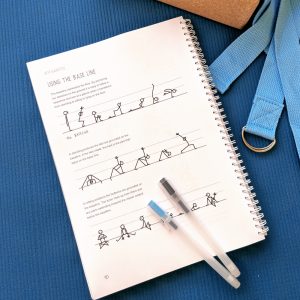
How does being a designer influence your artistic vision? What else influences your artistic vision?
As a designer, I love systems, and I love to understand underlying principles. I am fascinated by how visuals can help us to understand a complex topic, explore our own thoughts, and communicate our ideas to others. In my line of work, I use sketching and drawing more as a pragmatic tool to create understanding and, less in the realm of creating art in the traditional sense. I try to make things as simple as possible so they’re also accessible to people who think they can’t draw. At the same time, I still want my work to have warmth and personality, even in the simplest sketches.
“I use sketching and drawing more as a pragmatic tool to create understanding and, less in the realm of creating art in the traditional sense.”
What’s your definition of mindfulness? What is the first step to becoming mindful in your day-to-day life?
For me, being mindful is the ability to notice things, both in the world as well as in my own body and mind. The more subtle and fine-grained our ability to notice becomes, the better we get to know ourselves and the world around us. It becomes a superpower. I like this quote by Thoreau: “It’s not what you look at that matters; it’s what you see.”
You could say that mindfulness is about going from merely looking to actually seeing.

Is there something that you’ve dreamed of doing for a long time? Why haven’t you done it (yet)?
I have a long and never-ending list of potential projects I’d like to do. The main reason why they aren’t a reality yet is that there are only so many hours in a day and I can’t do everything at once. So I practice patience and try to focus on one step at a time.
My next big project is to create my first online course to teach people how to sketch through video lessons. A book is a great place to start, but seeing someone demonstrate a skill is a much more immersive way to learn. I’ve already taught several live workshops, but speaking in front of a camera and hearing my own voice recorded is a slightly scary thing that I still need to get used to.
Apart from that, I am also working on a series of art prints that help to learn the Sanskrit Asana names in a playful way. The first one is already available, and there are two more to follow in the series.

What is your no-fail go-to when you need inspiration or to get out of a creative rut?
Two seemingly opposing things help me: stillness and activity. For me, a creative rut usually comes from fear and pressure. Giving myself the time and stillness to listen to and observe my own thoughts without pressure or expectation usually makes room for ideas and possibilities to show themselves.
“Giving myself the time and stillness to listen to and observe my own thoughts without pressure or expectation.”
And then it’s important to just get started. One of my design heroes, Otl Aicher, once said: “The Making influences the Thinking.” I totally agree. Once I get started, new thoughts and ideas start to develop through the process of doing. I need to show up for the ideas to show up.

If you could invite anyone in the world to dinner, who would it be?
Steven Pinker, a linguist who has studied the structure of language and how it is connected to how the mind works. I love language, both verbal and visual, and I am fascinated by how a system can combine structure with meaning to create endless possibilities of expression. I’d love to have a long geeky conversation with Steven and swap thoughts on how words and grammar relate to images and visual structure.
In moments of self-doubt or adversity, how do you build yourself back up?
I breathe and remind myself that nothing is permanent, that my feelings of doubt usually come from the perspective I currently have, and that this perspective can change. Usually, a new day also brings a fresh view on things.
A book or a film that transformed your life?
Similar to the question about achievements, I can’t pinpoint transformations to single events or films or books. There might be certain events that mark starting points along a longer journey which ultimately leads to transformation. Looking back, these starting points have mainly been direct experiences rather than books or films, like starting a yoga practice, discovering improvisation or diving deeper into meditation on a Vipassana retreat.
What does the world need more of? Less of?
More agency. Less consumption.
Consuming is a very passive way of experiencing the world. To me, it means that my wellbeing and joy depend on things. I feel that consumption has become the default mode of the modern world.
I wish people would shift (back) to a more empowered state where they proactively do things themselves rather than wait for a solution to come in the form of a product. I know this critique might seem paradoxical as I create products myself, but the books and prints I make aim to teach people skills. With the necessary skills, they feel empowered to do things they want to do and have an impact in the world. That’s agency: the capacity to act independently and to make your own free choices.

What’s your favorite word? Why?
I like onomatopoeic words — they’re words that sound like their meaning. The German for ‘Onomatopeia’ is ‘Lautmalerei,’ which means ‘painting with sounds’ (which is a beautiful metaphor and lovely word in itself). One of my favourite onomatopoeic words is ‘chuchoter’ which means ‘to whisper’ in French.
Check out Eva-Lotta’s Instagram, the Yoga Notes Instagram, and her online shop.
Edited by Ely Bakouche


